Consider this (true) story about a publically traded company:
1) EXPERIENCED LEADERSHIP: Entrepreneurial executives with established track records from prior companies are in charge of the company.
2) ACCESS TO CAPITAL: Multiple deep pocket partners provide more than adequate financing for future growth, and new partners are waiting on the sidelines to “jump in”.
3) ECONOMIC EDGE: At least one analyst believes this company is an “industry disrupter” in somewhat the same mold that Apple (AAPL) used to be a “disrupter” and that Amazon (AMZN) and Google (GOOG) continue to be “disrupters”.
4) INDUSTRY GROWTH: This company is positioned within an industry that is on the “cutting edge” of current technology and energy development/delivery:
a. Just 7 years ago, one of these energy systems was created every 80 minutes;
b. Today, a new system is put in place every four minutes;
c. By 2016, one industry analyst projects that one new system will come on board every 80 seconds!
5) THEORETICAL “GLASS CEILING”: Even at the current pace of growth, in three years this industry will only generate about 2% of total US power! The implication is that, in theory, “the sky is the limit” with regard to potential demand.
6) HOT STOCK SECTOR: Just this past week (Sept 2-7), an ETF focused within this industry was the market’s single best performing ETF (up about 10%)!
7) POSSIBLLY SYNERGISTIC ACQUISITION: In early August, the company bought a company that brings additional, established executive talent schooled in world-class promotion and direct marketing.
8) A COMPELLING, CHIC, MARKETABLE VISION: (Straight from its own website)
 Are you psyched yet? Sounds pretty exciting, doesn’t it?!
Are you psyched yet? Sounds pretty exciting, doesn’t it?!
Ah, you ARE excited!
What’s that? You want the ticker symbol so you can buy some shares the next time the market opens?
Whoa there, tiger! Not so fast!
There are some other things you need to know about this company first:
1) VALUATION ISSUES WITH THE IPO: The IPO for this stock was initially priced at $15/share. However, the market made it clear that $15 price was way too high. To management’s credit (unlike Facebook (FB), its CEO (Mark Zuckerberg), and lead underwriter, Morgan Stanley (MS)) this IPO was totally refashioned. The IPO “went off” last December (with strong support and some creative “spin doctoring”) at a greatly reduced $8/share, while still pulling in approximately the same amount of capital!
2) SUPER HOT STOCK IN 2013: Since the December IPO date, this stock reached a closing high of $51.60 on May 20th (sparing you the mental math, that is a 545% price increase!).
3) THE STOCK HAS “COOLED OFF”: The stock sits now (September 6) at $29.61 (almost 43% lower than the year’s high). I hasten to add that this does not necessarily make the stock a bargain!
4) EARNINGS CHALLENGED: For the fiscal year ended 12/31/12, annual earnings/share totaled a loss of $4.83/share.
5) CASH FLOW CHALLENGED: Excluding cash inflow from the issuance of stock, net cash flow for FY 2012 was a negative $65 M ($4.56/share).
a. Net cash flow for Q1 2013 was -$33.3 M; however, for Q2, it turned positive: $19.4 M!
Do you still want to buy shares of this stock?
 I know that, by now, some of you have already deduced which company this is! For the rest of you, let me now (reminiscent of the 1950’s TV Show, “What’s My Line?”, reveal the identity of this company: SOLAR CITY (SCTY).
I know that, by now, some of you have already deduced which company this is! For the rest of you, let me now (reminiscent of the 1950’s TV Show, “What’s My Line?”, reveal the identity of this company: SOLAR CITY (SCTY).
SCTY was founded in 2006 by two young, but already successful and proven entrepreneurs: Lyndon Rive and Peter Rive, who created Everdream and sold it to Dell (DELL) in 2007. SCTY does not design or manufacture solar panels; instead, its business model is based on serving as an enabler of residential and business/government photovoltaic system installation, leasing said system to the owner at no upfront cost for a twenty year term. The result is an intriguing new model for power generation. Overtime, SCTY is creating a growing network of power generating capacity!
Here is one of the facts to which some analysts point as evidence that SCTY is an “industry disrupter”. In particular, the “traditional utility” company depends upon one or more large, “fixed” physical plants to generate power. You could call such a system “centralized”. SCTY, in contrast, is creating extremely “dispersed”, “mini” power generating systems on the rooftops of residential, business, and government customers. That system is, decidedly, “de-centralized”.
Therefore, the first part of the SCTY business “proposition” is the installation and financing of solar systems on the roof of a customer. The second part of that “proposition” is the promise of a steady, reliable stream of electric power for that customer for the following twenty years – at a cost guaranteed to be lower than the average cost of that customer’s traditional utility provider!
A notable illustration of the “SCTY Value Proposition” can be found in a recent SCTY annual report:
“A Maryland homeowner sought a solar energy solution to reduce high summertime electricity bills and ultimately decided to lease a solar energy system from us. Over the 20-year term of the contract, he will pay us $29,746 and is projected to create a net savings of $8,305 compared to his projected utility bills. The solar energy system is expected to offset 240,024 pounds of greenhouse gas emissions over the contract term, the equivalent of planting approximately 130 trees. The solar energy system components, including panels, inverters and labor, cost approximately $18,276.”
There are a number of existing factors that provide SCTY with helpful “tailwinds” toward the successful execution of its long-term business plan:
1) FEDERAL TAX BREAKS (and some state tax breaks): The innovative financing design used by SCTY to fund new solar installations benefits significantly from the 30% tax credit currently provided for qualified solar installations!
2) NET METERING ACCOUNTING: Most SCTY customers benefit from flexibility vis-à-vis the timing of power generation versus power consumption. Specifically, if a customer is away from home all day, all daylight power generated through her/his solar system gets “sold” to the local utility and “fed into the grid”. When said customer returns home and starts consuming power, they can take advantage of the “excess credits” earned earlier in the day. This is called “net metering”.
3) EXPLOSION IN NEW HOME CONSTRUCTION: Obviously, the easiest and cheapest solar system installation is one completed on a new structure. In the past few months, the housing sector has been “heating up” – giving SCTY and its “partners” a boost in installations. However, due to the realities of old-fashioned economics, the near doubling of 10 Year US Treasury Note interest rates has slowed down any “explosion”.
4) STEADY UPWARD TREND IN ENERGY PRICES: Part of the SCTY financial model is predicated on “past being prologue to the future”. The company quotes a report that asserts that “residential utility rates in our top markets doubled over the past twenty years, while usage did not similarly abate.”
These are extremely beneficial “tailwinds” for SCTY. However, besides the impact of rising interest rates, there are three other developments that loom in the future as potential “headwinds” for SCTY:
1) TAX BREAKS: The existing 30% tax break on installations is scheduled for a reduction to 10% on January 1, 2017!
2) NET METERING: Some utilities have started questioning the net metering set up. Therefore, a debate on this matter is heating up in several states. First, it is claimed that existing non-solar customers pay a defacto “subsidy” to support net metering. Second, as a general rule, net metering regulations place a limit on that feature that is predicated on the total share of power within that grid system provided through solar power. Therefore, within the grids that have the fastest growing number of solar installations, net metering may be short-lived.
3) STEADY UPWARD ENERGY PRICES: I am no energy expert, but it is reasonable to wonder whether the emerging abundance of natural gas and other carbon-based resources within the U.S. (in addition to growing wind generation[1]) may lead to a reduction of power inflation.
At the risk of sounding like the “Grinch That Stole SCTY”, there is at least one more issue that should be the subject of “due diligence” prior to investing in SCTY. Here is a graph from a recent SCTY investor presentation. It depicts the projected future value of an essential SCTY long-time asset: its installed base of photovoltaic power generating systems. In reports, SCTY refers to this future asset value as “Renewal Value”.
Precisely what is this asset? It is simultaneously very simple and surprisingly complex.
We know that SCTY installs a solar system on each client’s roof for free, and then leases the system to the customer for 20 years. This means that the customer owes a stream of payments to SCTY over the following 20 years, at the end of which SCTY assumes full control over that system with regard to any future use/uses of the power generated. How does one calculate the value of that future asset?
As you might guess, there are a multitude of potential calculation methods. The method used by SCTY is based on an assumption that SCTY will automatically sign that same customer on for a renewal period of up to ten additional years (solar systems have a 30 year “expected life”). So the “Renewal Value” is predicated on the present value of that future revenue stream, expected to have increased by that time in accordance with utility power cost trend lines. (See earlier discussion of utility power cost assumptions.)
That sounds reasonable, correct? However, does technology remain stagnant? What happens if the current installed base of solar panels is rendered semi-obsolete at some point due to a technology breakthrough? What will a customer do? What happens if energy price trend lines flatten at some point? The danger here is real, but impossible to pin down with certainty. Any and all of the assumptions wrapped up in the accounting for a value twenty years hence become important. Because of the impact of compounding on such future value calculations, if any of SCTY’s assumptions are incorrect, the value reported for “Renewal Value” will need to be recalculated.
Under normal circumstances, the amendment of a “future value” number is not a significant issue. However, in the absence of compelling good news on the “earnings” or “net revenue” data, during investor presentations, SCTY has been placing the most significant attention on customer growth, the growth of “MW’s”[2], and growth in “Renewal Value”.[3] Therefore, that “future value” number takes on particular importance!
Let’s take a look at stock price performance!
Here is a look at this stock since it was issued:
That may not seem like a startling chart. However, keep in mind that from the left side (December) to the middle (May) represents a move upward of over 500%. The move from May through September 6 was downward by over 40%! “Mercurial” would be an apt descriptive adjective!
Here is something even more startling and revelatory – detail on the SCTY chart in May:
Believe it or not, on May 16th, the price skyrocketed from $35.69 to $45.00 in one day. That is a move upward of 26.09%! That day’s increase came in anticipation of an impending earnings report.
What factors led to this insane one-day move? Well, I intentionally kept this part for last.
Guess who SCTY’s two founders have as a cousin?? None other than the internationally overhyped Elon Musk: founder of PayPal, SpaceX, and TESLA (TSLA)! When you are a nascent company — heavily dependent on strong, liquid financing — that begins to struggle mightily as the financial crisis strikes in full force during 2008, “who you do call on”??[4]
Lyndon and Peter did not call on the “Ghostbusters” or any bank or energy company. They called on cousin Elon – whose multi-billions in assets and Teflon business image (nothing bad sticks to him) was all they needed to ensure the company’s future success. Elon became Chairman of SCTY (like he needed another job) and provided the deep pockets that qualified SCTY for money from other finance partners.[5] Therefore, with Musk’s cache and salesmanship, SCTY was accorded the same mystique as TSLA![6]
Speaking of TSLA, here is a chart comparing SCTY with TSLA:
Notice that, until mid-June, SCTY was far outperforming TSLA!!!
Take a really close look at this chart, folks. What do you see?
Anyone who sees a stock now available at an attractive, compelling price level – please move to the back of the class immediately!!
TSLA has gone up 400% in nine months, while even after tanking since early August, SCTY is still up over 150% during that same time period! And SCTY doesn’t even have net earnings!
What moved SCTY downward after its May peak? The Q1 2013 earnings report disappointed big-time! For a young company depending upon “hope”, it wasn’t bad enough that it had negative earnings – much, much worse, the number of new customers and number of newly signed contracts during Q1 were lower than during the prior year’s Q1!!
Here is a graph of SCTY versus the S&P 500 Index – an unfair comparison because most of the S&P 500 Index companies actually report positive earnings!
Did I say “unfair comparison?
Maybe it is an “insane” comparison!
The index (in red) has established, discernible, dependable earnings, while SCTY has none. And yet SCTY has left the S&P “in its dust” this year! I guess that is the power of hope!
Or is it the power of promotion? In August, SCTY purchased one of its key business partners: Paramount Solar. That sounds unspectacular, until you read all the details.
What was the big shortcoming in the company’s Q1 earnings report? New customer data!
What are the strengths of Paramount Solar?
1) Paramount Solar is owned by Paramount Equity. The latter is a residential mortgage company run by a young, earnest, savvy, trust inspiring leader named Hayes Barnard. See http://www.youtube.com/watch?v=vkpu3UjdpPE
2) Paramount Equity partnered with Guthy | Renker . The latter is an international TV direct marketing giant that claims Tony Robbins, Cindy Crawford (they call her “the most famous super model ever”), Victoria Principal Skincare, etc. Its motto is “Creating an Extraordinary Quality of Life”! Equally telegenic co-founder, Ben Van De Bunt — can be viewed and heard in this video as one who is as smooth, earnest, and convincing as Barnard. See http://www.youtube.com/watch?v=clwqBXcAIao
3) In the fine print of this modest $120 million deal (chump change for Elon) is the detail that Barnard has been named “Chief Revenue Officer”[7] and Van De Bunt (pending board approval) is being added to the SCTY board of directors. One might suggest that the future value of those “human” additions to the inside circle at SCTY could prove to become at least as valuable as the purchase price of Paramount![8]
Finally, here are some miscellaneous observations about SCTY and the solar industry:
1) Compared to industry peers, one could hypothesize that SCTY is overpriced vis-à-vis its financial data.
a. Here is one example. On a “Stock Price versus Net Sales per Share” basis, for the 2012 FY, SCTY ratio was $5.43 price per $1.00 net sales (based on the Sept 6th price).
b. In sharp contrast, here is the corresponding figure for other solar companies:
i. ReneSola Ltd (SOL) (0.41 P/Sales)
ii. Yingli Green Energy Holding (YGE) ( 0.48 P/Sales)
iii. Trina Solar (TSL) (0.61)
iv. SunEdison Inc (SUNE) (0.86)
v. First Solar (FLSR) (1.17)
c. That is what I call “food for thought”!
2) The company has a penchant for creating high-ranking titles. Take a peek at this page: http://www.solarcity.com/media-center/management-team.aspx. For a relatively small company, that is a high number of “chiefs”, VP’s, and EVP’s.
a. As far as I can tell from that page, they now have two CRO’s! (Barnard will be the second!)
3) SCTY reports its finances in an interesting fashion, including a line for “Revenue” and a separate line for “Cost of Revenue”. Given the areas within which they are weak, that is a very shrewd way to present the data!
4) Solar stocks have been hot this year. As reported much earlier, one of the solar industry ETFs, Market Vectors Solar Energy ETF (KWT), was the top performing ETF during the week of Sept 2 through Sept 7. It was up about 10%. In light of that, review this chart of SCTY compared with the industry two ETFs: KWT and Guggenheim Solar ETF (TAN):
What is indicated by the fact that SCTY is priced so much higher than other companies in its industry?
Answer anyone? Anyone?
Well, any of these responses could be plausible:
1) There is an “Elon Musk Premium”?
2) Elon Musk is Chairman; Elon Musk graduated from a prestigious East Coast business school program;
3) Elon Musk is the “post-modern anti-Buffett”[9];
4) Elon Musk is close to mastering the art of walking on water!
OK, I admit it! I am not a big Elon Musk fan. I see him as the current holder of the virtual “Barnum Bailey” chair within the realm of Wall Street! [10] But to prove (without a doubt) that I am a fair, even-handed commentator, I paraphrase for you (below) blunt and heartfelt quotes from Musk that emerged from an August 21st interview on CNBC. Note that his comments refer to TSLA, but they apply equally to SCTY:
1) The market is being very generous.
2) Market participants are giving us a lot of credit for future execution.
3) Our valuation right now is more than we have any right to deserve.
4) Our company’s stock price is obviously too high based on historical financials or even current financials.
I tip my hat to Mr. Musk! Good for him! Honesty from Wall Street!!
INVESTOR TAKEAWAY: I have provided you with a load of information. The one thing (above all else) that I want to make sure you remember from this story is simple – but very important for your financial future!
Please re-read the first two sections of this article. If I was describing SCTY to you and only informed you of the top eight points, what might you have decided regarding whether or not you wanted to invest?
On the other hand, if the only information I shared with you was what appeared in the “other things you need to know” section, what would you be likely to decide about SCTY?
Can anyone make a reasonable decision based upon just one or the other of those sets of company information? Of course they can’t!! And yet, everyday on Wall Street, or through interviews on CNBC, or via phone conversations between clients and brokers – partial information is shared about one or more U.S. stocks!
It is imperative that, before you invest even one dime of your own money, you need to find out as much as you can about a company – both positive and negative! Trust me, no one will safeguard your hard earned money as effectively as you can. So be aware, be inquisitive, be thorough, and never ever trust someone you do not personally have reason to trust!
With regard to how you might “trade” SCTY, here are some brief thoughts (not recommendations):
1) If you cannot resist trading SCTY, you must manage your risk!
2) What is the one thing everybody can agree upon regarding SCTY? It is VOLATILE! Therefore, option premium should be larger than average!
a. That might provide you with an “edge”;
b. Ask about or learn some “neutral” trading strategies with which you stand a better than even probability of capturing premium through either a bull or bear credit spread!
3) Keep a sharp eye out for future SCTY earnings reports. Once they begin to generate consistent positive earnings and net cash flow, reassess the company fundamentals and future prospects!
DISCLOSURE: The author does not currently own SCTY or any of the other securities referred to in the above article. In the past, I have, at times, owned spreads on FSLR. Nothing in this article is intended as a recommendation to buy or sell anything. Always consult with your financial advisor regarding changes in your portfolio – either subtractions or additions.
Submitted by Thomas Petty MBA CFP
[1] Extreme wind generation from Washington DC does not count here!
[2] MW stands for MEGA WATTS of generating power.
[3] I should add that the presentations are always slick, with optimization of buzzwords.
[4] This is an oblique cultural reference to the “Ghostbuster” film franchise, whose main tagline was “Who do you call on…. Ghostbusters!”
[5] Remember that banks do not lend you money when you are desperate for you… only when you could possibly continue without that financing!
[6] I note for the record that it was Elon’s posting of $150 million of his own money back in December that ensured SCTY could command enough interest at $8/share to nearly double the size of the IPO issue! The key tagline in the press release ran something like (paraphrasing loosely) “Elon Musk has such faith in the future of SCTY that he is putting up $150,000 million of his own funds to buy shares NO MATTER WHAT THE ISSUE PRICE IS!” The man does know how to “sell”!
[7] SCTY already has a CRO… in the position since January 2012. No word is offered on the SCTY website regarding what will become of him!
[8] It should significantly increase the “network” on which SCTY can continue to build its web of financing.
[9] This means that stock prices can be based on promotion, expectation, social consciousness, and/hope instead of “value”.
[10] Naturally, there is no “Barnum Bailey” chair. But if there was, Musk would qualify to fill the role! It will be fascinating to see how he interacts with Barnard and Van De Bunt – both of whom possess many of Musk’s self-promotional skills.
Related Posts
Also on Market Tamer…
Follow Us on Facebook

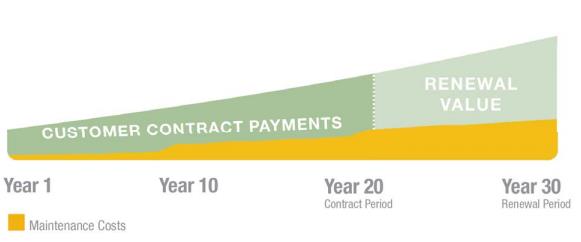
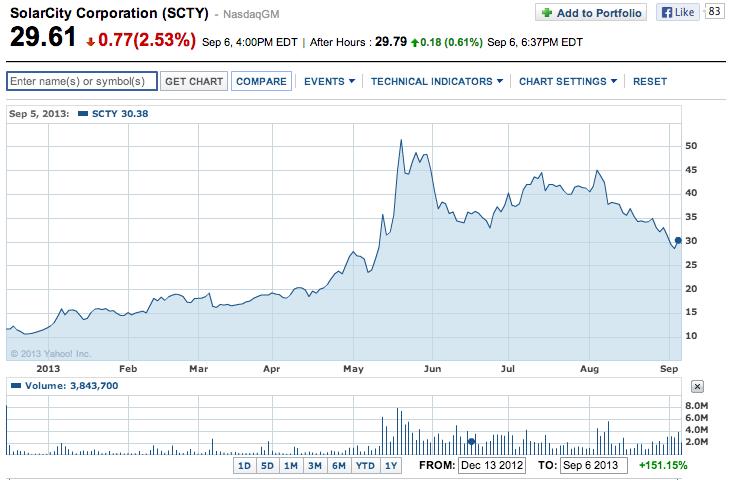
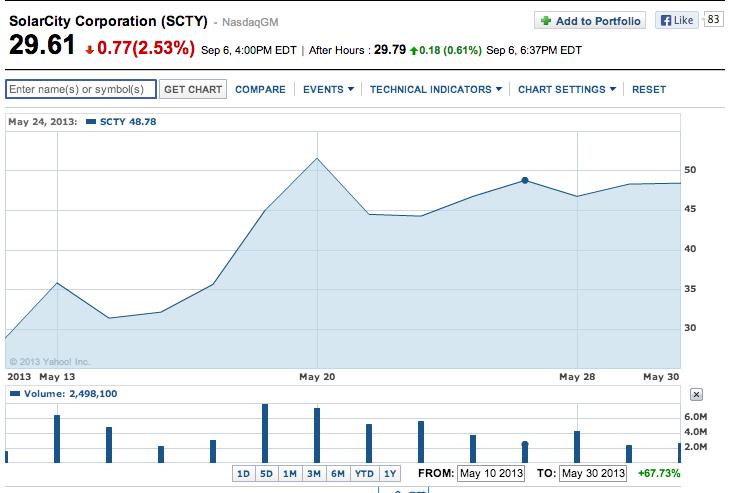
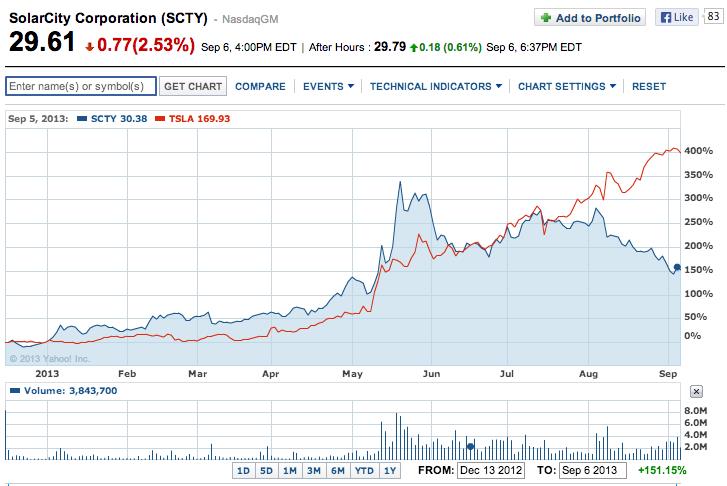
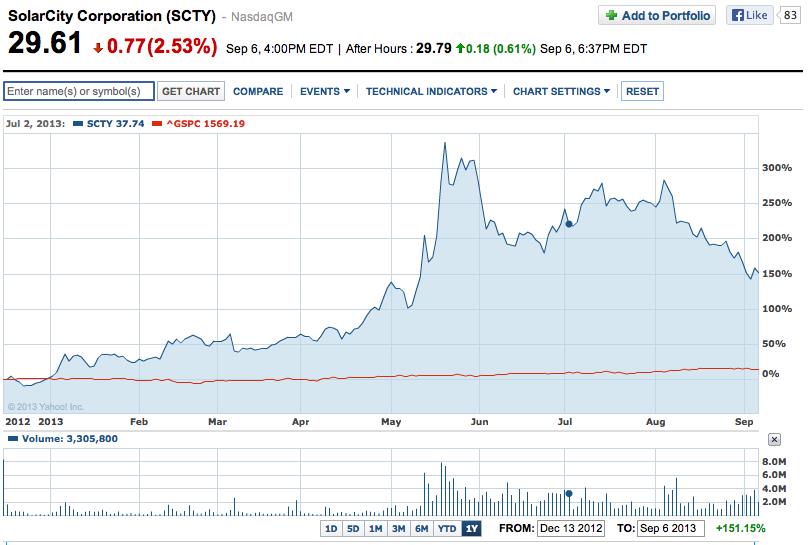
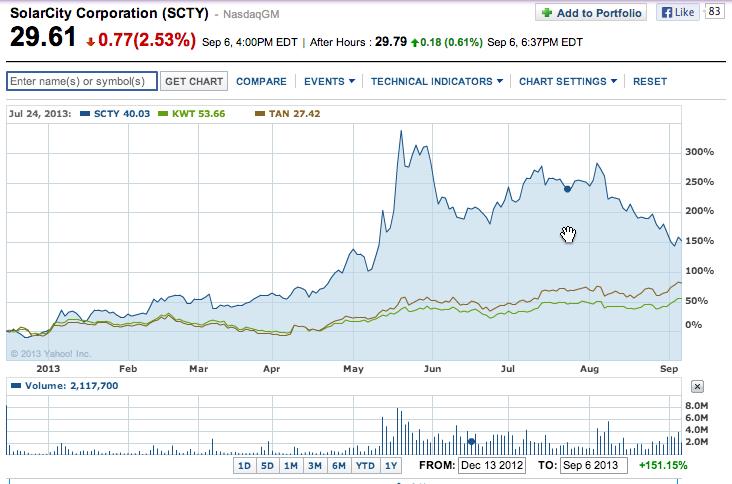
 You Don't Need Talent to Succeed: Lessons From Warren Buffett's Lifetime of Investing
You Don't Need Talent to Succeed: Lessons From Warren Buffett's Lifetime of Investing



